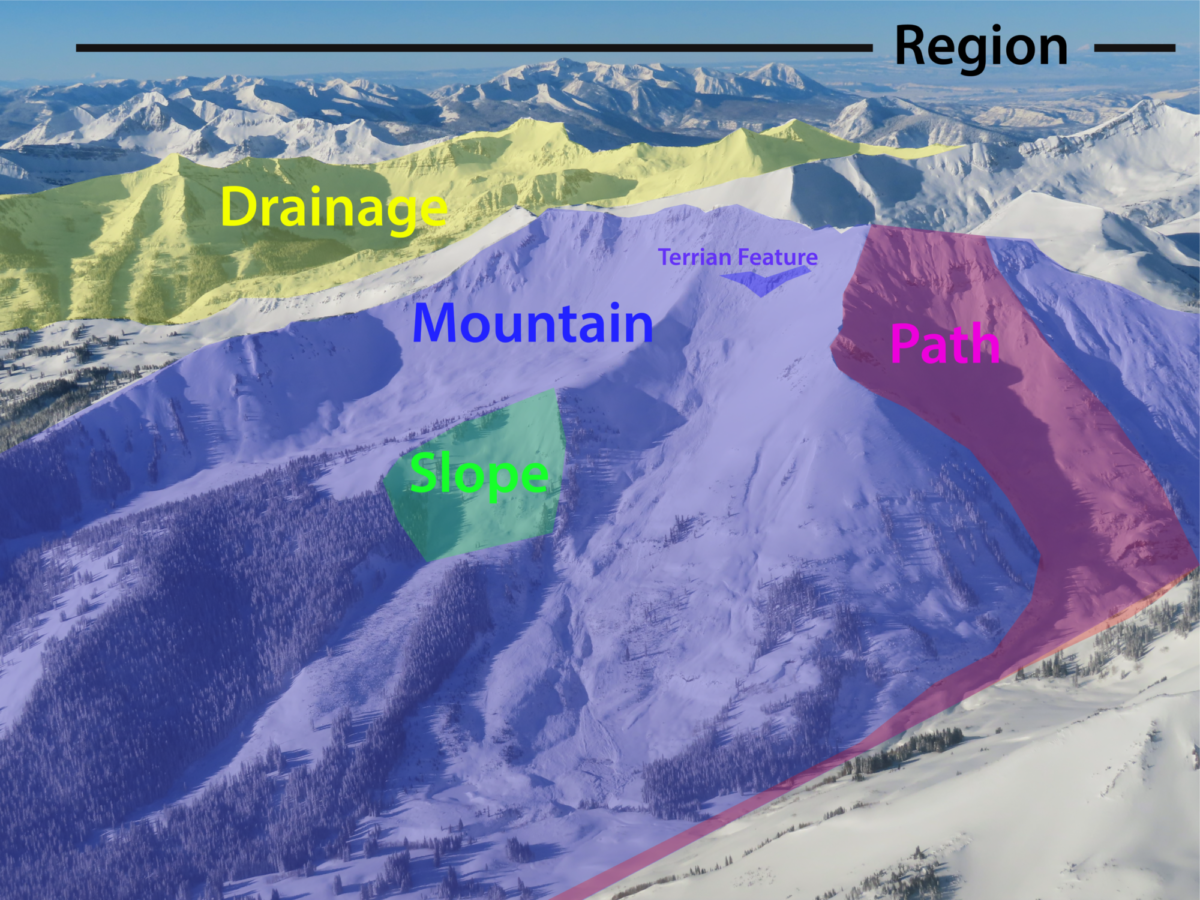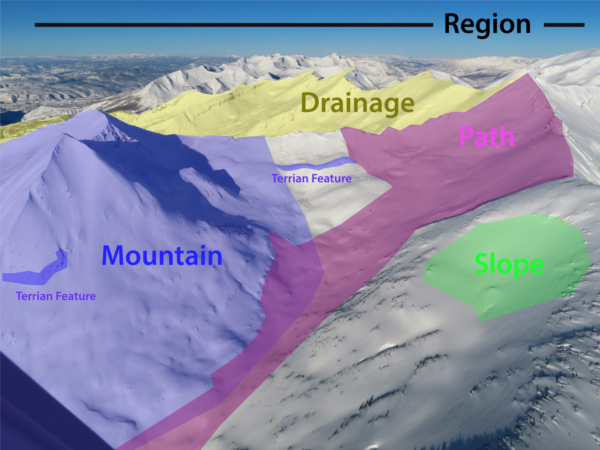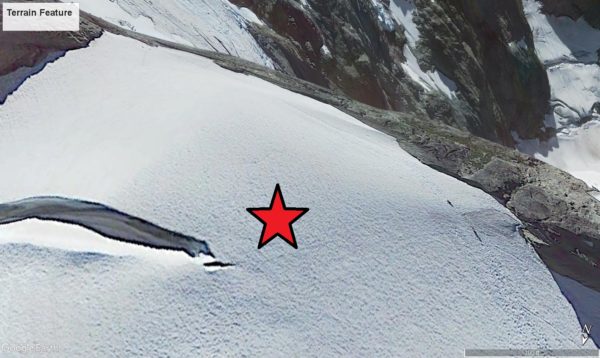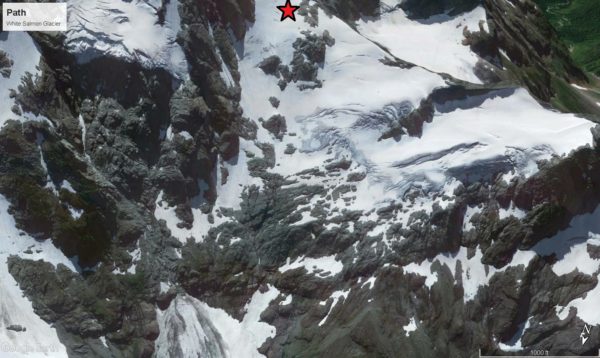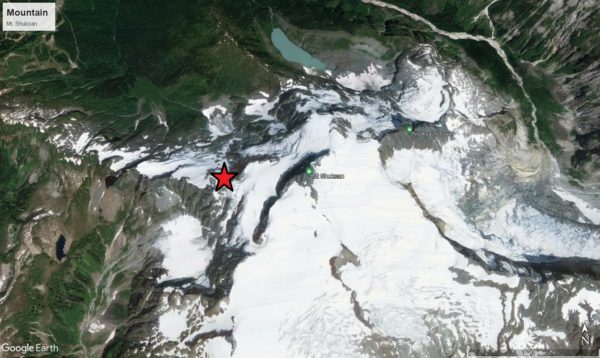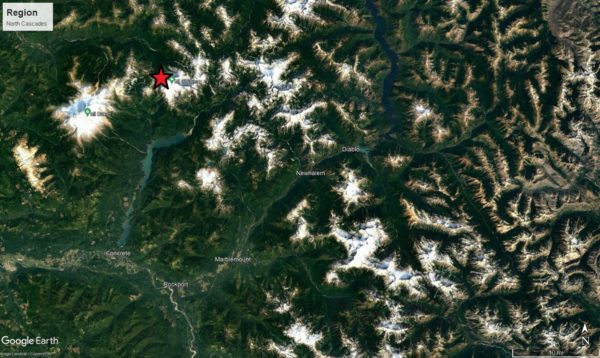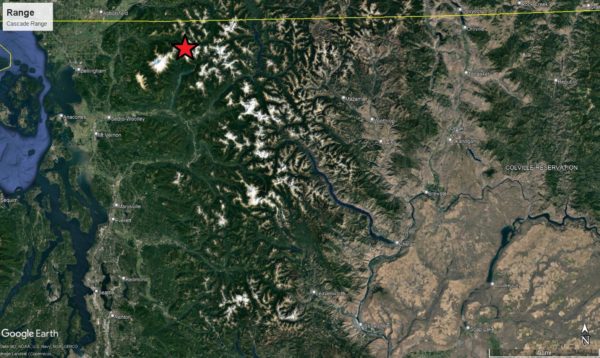The relative geographic extent of a hazard or assessment, ranging from small terrain features to entire mountain ranges.
Snowpack characteristics and avalanche hazards vary across spatial scales. The scale puts in context the relative extent of terrain for which assessments apply. Spatial scales can vary from micro (terrain features) to macro (mountain ranges).
- Terrain Feature: Terrain features are individual geographic features contained within a larger slope, such as a rollover, a rock band, or a gully. Think of it as some part of the slope where you might slash a few turns.
- Slope: Slopes are large, open, inclined areas with somewhat homogeneous characteristics bounded by natural features such as ridges, gullies, or trees. These could be typical avalanche starting zones or open areas on a ski run. Think of it as a pitch where you and multiple friends could all link together a dozen or more turns.
- Path: A path is a series of interconnected slopes and terrain features running from near ridge crest to valley bottom, such as a full-length avalanche path. Think of it as a long backcountry ski run.
- Mountain: A mountain is an area rising considerably above the surrounding country with numerous aspects and vertical relief running from summit to valley bottom, such as a ski resort area or a peak. Think of it as an objective that could offer numerous descent options on different faces or paths.
- Drainage: A drainage is an area with a perimeter defined by the divide of a watershed, such as a typical single operating zone in a helicopter skiing area. Think of it as a basin large enough to spend most of a day snowmobiling without crossing your tracks.
- Region: A region is a large area of multiple watersheds defined by mapped boundaries, such as a typical public forecasting area or public land jurisdiction. Think of it as an area where you would need multiple days snowmobiling to adequately see the terrain.
- Range: A range is a geographic area containing a chain of geologically related mountains, such as a mountain range or sub-range. The range scale is large enough to span across state boundaries.
